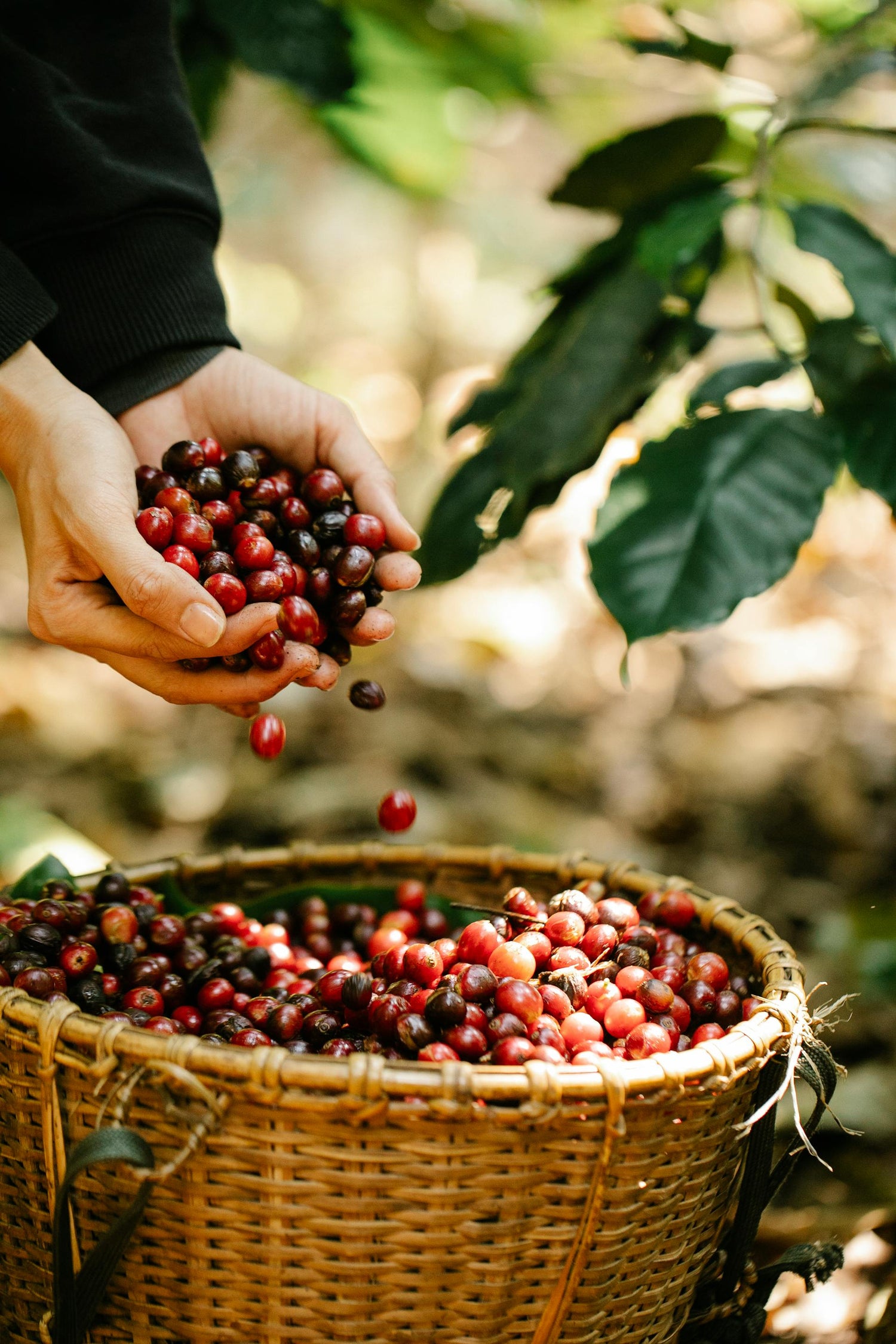The Price of Coffee Is Climbing—Here’s What’s Really Behind It

Why Your Coffee Costs More Than Before
If you've noticed that your morning cup of coffee is getting more expensive, you're not imagining things. Coffee prices have been on the rise globally, and this trend is affecting everyone from farmers to coffee lovers. But what’s behind this price increase? And more importantly, how will it impact your daily brew? In this article, we’ll explore the major factors driving up coffee prices, the challenges facing the coffee supply chain, and what this means for consumers and the industry as a whole.
What’s Causing Coffee Prices to Rise?

Climate Change & Extreme Weather
One of the biggest challenges facing the coffee industry is climate change. Coffee is a delicate crop that requires specific growing conditions, and shifts in global temperatures, along with extreme weather events, are making cultivation increasingly difficult.
- Brazil, the world’s largest coffee producer, faced severe challenges in 2024 due to heavy rains and flooding, particularly in key coffee-growing regions like Minas Gerais. Excess moisture led to lower yields, delays in harvesting, and concerns about mold affecting bean quality. This disruption has contributed to a significant spike in coffee futures, with prices rising by over 30% since early 2024 (Source: International Coffee Organization).
- Rising temperatures and unpredictable rainfall patterns have also affected Colombia, the third-largest coffee exporter, reducing yield and quality.
- The El Niño weather pattern is expected to bring further droughts and excessive rains in major coffee-growing regions, impacting harvests and pushing prices higher (Source: World Meteorological Organization).
Supply Chain Disruptions
The global supply chain crisis has also played a significant role in rising coffee prices. Several factors contribute to this issue:
- Higher shipping costs: The cost of transporting coffee beans has surged due to fuel price hikes and container shortages. Freight costs for coffee shipments have increased by nearly 200% in the last three years (Source: Drewry Shipping Index).
- Delays in transportation: Port congestion and labor shortages have slowed down coffee exports, leading to supply bottlenecks.
- Political instability: Conflicts in key trade regions have further disrupted the smooth flow of coffee from farms to consumers.
Increasing Production Costs
Growing and harvesting coffee has become more expensive due to various economic pressures:
- Labor shortages: Many coffee-producing countries face a shrinking workforce as younger generations move away from farming. This has driven up wages in countries like Vietnam and Ethiopia.
- Rising costs of fertilizers and agricultural inputs: Fertilizer prices have doubled in the past two years due to supply chain disruptions and geopolitical tensions, making coffee farming more expensive (Source: World Bank).
- Increased land and processing costs: Farmers are facing higher operational expenses, and these costs are passed down the supply chain.

Market Speculation & Economic Factors
Like many commodities, coffee prices are influenced by market speculation. Investors trading coffee futures contracts can drive up prices based on perceived risks and future supply concerns.
- In 2024, coffee futures continued their upward trajectory, with Arabica coffee trading at over $2.55 per pound, compared to $1.10 per pound in 2019, marking a staggering 130% increase over five years (Source: Bloomberg Markets).
- Currency fluctuations also affect pricing. Since coffee is traded globally in U.S. dollars, a weaker local currency in exporting countries means higher costs for international buyers.
How Do Rising Coffee Prices Impact Consumers?
Higher Prices at Cafés and Grocery Stores
With wholesale coffee prices increasing, cafés and roasters have little choice but to pass these costs on to consumers.
- The average price of a cup of coffee in U.S. cafés rose by 7.6% in 2023 (Source: U.S. Bureau of Labor Statistics).
- In Japan, specialty coffee retailers have increased prices by 10-15% due to higher import costs, labor expenses, and the weakening yen. Since coffee is traded in U.S. dollars, the depreciation of the yen has made imports significantly more expensive, further driving up costs for consumers and businesses alike.
Shifting Consumer Preferences
As prices climb, some coffee drinkers are adjusting their habits:
- Many consumers are shifting towards brewing coffee at home rather than frequenting major coffee chains. Data shows that in 2023, home coffee brewing rose by 15%, with more people purchasing from local or online specialty roasters instead of relying on chains like Starbucks (Source: Specialty Coffee Association).
- Subscription coffee services have grown in popularity, offering competitive pricing while ensuring a steady supply of high-quality beans.
The Growing Demand for Specialty Coffee
Despite rising costs, the demand for specialty coffee continues to grow. Consumers are increasingly willing to pay more for sustainably sourced, ethically produced beans.
- Specialty coffee sales grew by 9% in 2023, even amid price hikes (Source: Specialty Coffee Association).
- Consumers are prioritizing quality over quantity, choosing higher-end, traceable coffees that support fair trade and environmental sustainability. Additionally, many coffee lovers are willing to pay more for unique, small-batch roasts that offer distinct flavor profiles, valuing craftsmanship over cost savings.

What’s Next? Will Coffee Prices Keep Rising?
Short-Term vs. Long-Term Outlook
- Analysts predict that coffee prices will remain volatile through 2025, with potential price stabilization depending on improved harvests in Brazil and Vietnam.
- Climate change and labor shortages are long-term challenges that could keep coffee prices elevated for years to come.
Potential Solutions for the Coffee Industry
- Investment in sustainable farming: Programs supporting climate-resilient coffee crops can help mitigate risks.
- Technological advancements: AI and blockchain technology are being explored to optimize supply chains and reduce inefficiencies. Additionally, automation in coffee farming, such as AI-driven weather prediction models and precision agriculture techniques, is helping farmers improve yield and sustainability. According to the Specialty Coffee Association, farms that implement AI-based monitoring systems have reported up to a 20% increase in efficiency and a reduction in waste. These advancements are shaping the future of coffee production by making it more resilient to climate change and economic fluctuations.
- Diversification of coffee sources: Expanding coffee cultivation to new regions may help balance supply shortages in traditional growing areas. In recent years, lesser-known coffee-producing countries like Thailand, the Philippines, and emerging Latin American regions have gained attention for their high-quality beans. These regions are benefiting from increased investment in coffee farming, improved processing methods, and a growing consumer interest in unique, underrepresented origins. As a result, coffee drinkers are exploring new flavors beyond traditional powerhouses like Brazil and Colombia, further diversifying the global coffee supply.
How Can You Still Enjoy Great Coffee Without Overspending?
Buying Smart
- Purchase whole beans in bulk to save money.
- Look for direct trade or local roasters who offer competitive pricing without intermediaries.
Brewing at Home
- Home brewing is more cost-effective than daily café visits. Investing in a good grinder and brewing equipment can lead to long-term savings.
- Explore alternative brewing methods like Aeropress, French press, or pour-over to control costs while enjoying high-quality coffee.
Supporting Sustainable Coffee
- Choose brands committed to fair trade and environmentally friendly practices.
- Support coffee farmers by purchasing from ethical roasters who reinvest in sustainable agriculture.
The Future of Coffee in a Changing Market
The rising cost of coffee is a complex issue driven by climate change, supply chain disruptions, economic factors, and increasing production expenses. While consumers may feel the impact through higher prices, there are ways to adapt—whether by brewing at home, choosing sustainable options, or supporting ethical brands. By staying informed and making conscious choices, we can all contribute to a more resilient coffee industry.
Sources
- International Coffee Organization (ICO)
- World Meteorological Organization (WMO)
- Drewry Shipping Index
- World Bank
- Bloomberg Markets
- U.S. Bureau of Labor Statistics
- Specialty Coffee Association
Coffee is more than just a beverage—it’s a global industry that connects people from farm to cup. By understanding the factors affecting coffee prices, we can appreciate every sip even more.




